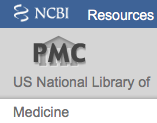Ticiano Gomes do Nascimento, Priscilla Fonseca da Silva, Lais Farias Azevedo, Louisianny Guerra da Rocha, Isabel Cristina Celerino de Moraes Porto, Túlio Flávio Accioly Lima e Moura, Irinaldo Diniz Basílio-Júnior, Luciano Aparecido Meireles Grillo, Camila Braga Dornelas, Eduardo Jorge da Silva Fonseca, Eduardo de Jesus Oliveira, Alex Tong Zhang, and David G. Watson
Abstract
The ever-increasing demand for natural products and biotechnology derived from bees and ultra-modernization of various analytical devices has facilitated the rational and planned development of biotechnology products with a focus on human health to treat chronic and neglected diseases. The aim of the present study was to prepare and characterize polymeric nanoparticles loaded with Brazilian red propolis extract and evaluate the cytotoxic activity of “multiple-constituent extract in co-delivery system” for antileishmanial therapies. The polymeric nanoparticles loaded with red propolis extract were prepared with a combination of poly-ε-caprolactone and pluronic using nanoprecipitation method and characterized by different analytical techniques, antioxidant and leishmanicidal assay.
The red propolis nanoparticles in aqueous medium presented particle size (200–280 nm) in nanometric scale and zeta analysis (−20 to −26 mV) revealed stability of the nanoparticles without aggregation phenomenon during 1 month. After freeze-drying method using cryoprotectant (sodium starch glycolate), it was possible to observe particles with smooth and spherical shape and apparent size of 200 to 400 nm. Attenuated total reflectance Fourier transform infrared spectroscopy (ATR-FTIR) and thermal analysis revealed the encapsulation of the flavonoids from the red propolis extract into the polymeric matrix. Ultra performance liquid chromatography coupled with diode array detector (UPLC-DAD) identified the flavonoids liquiritigenin, pinobanksin, isoliquiritigenin, formononetin and biochanin A in ethanolic extract of propolis (EEP) and nanoparticles of red propolis extract (NRPE). The efficiency of encapsulation was determinate, and median values (75.0 %) were calculated using UPLC-DAD. 2,2-Diphenyl-1-picryhydrazyl method showed antioxidant activity to EEP and red propolis nanoparticles. Compared to negative control, EEP and NRPE exhibited leishmanicidal activity with an IC50 value of ≅38.0 μg/mL and 31.3 μg/mL, 47.2 μg/mL, 154.2μg/mL and 193.2 μg/mL for NRPE A1, NRPE A2, NRPE A3 and NRPE A4, respectively. Nanoparticles loaded with red propolis extract in co-delivery system and EEP presented cytotoxic activity on Leishmania (V.) braziliensis. Red propolis extract loaded in nanoparticles has shown to be potential candidates as intermediate products for preparation of various pharmaceutical dosage forms containing red propolis extract in the therapy against negligible diseases such as leishmaniasis.
* THESE STATEMENTS HAVE NOT BEEN EVALUATED BY THE FOOD AND DRUG ADMINISTRATION. THIS IS NOT INTENDED TO DIAGNOSE, TREAT CURE OR PREVENT ANY DISEASE.
